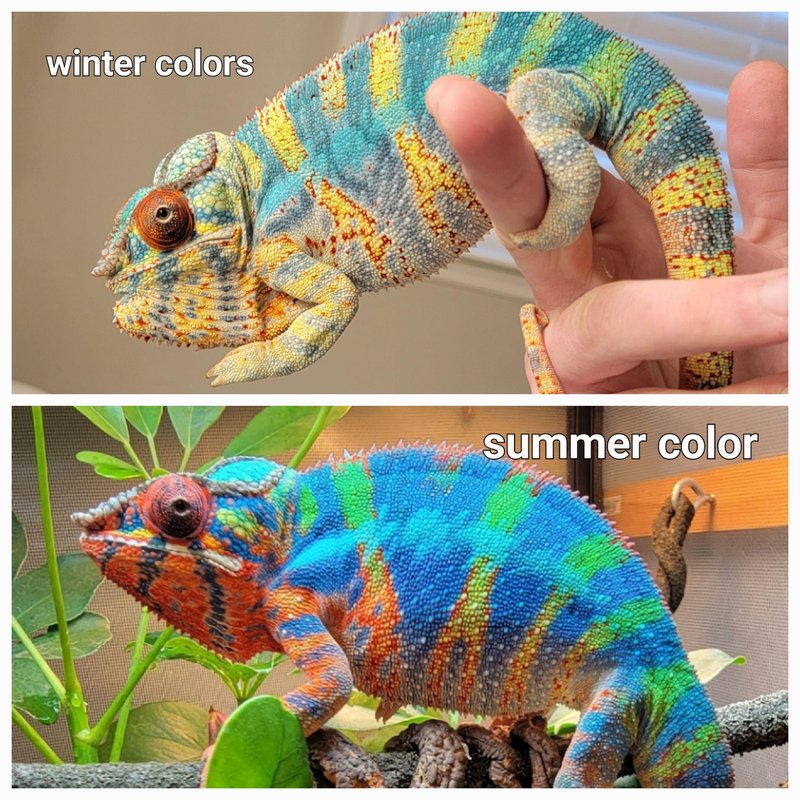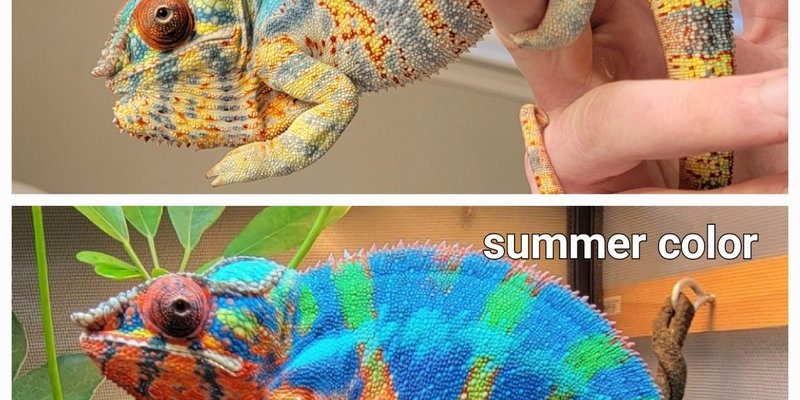
Imagine you’re at a dinner party, and someone’s wearing a shirt that changes color based on their mood. It’s cool, but it’s not exactly what you think! Just like the hypothetical dinner guest, veiled chameleons don’t change colors purely for fun or to show off. It’s all about communication and temperature regulation. So, let’s dive deeper into this captivating topic and separate *myths from reality* when it comes to color-changing veiled chameleons.
Understanding Chameleon Color Change Mechanics
To understand how veiled chameleons change colors, we need to look at their skin. It isn’t just a simple matter of pigments like in a paint bucket. The *chameleon’s skin* has several layers. The outer layer contains special cells called chromatophores, which have pigments that can expand or contract. These layers work together to create a rainbow of colors!
When a chameleon feels threatened or excited, its brain sends signals to these chromatophores. They change in size, which alters the way light reflects off their skin. It’s kind of like adjusting a curtain to let in more or less sunlight. This rapid transformation can take just seconds, which shows how well these little guys can adapt to their situations.
But why do they change colors? It’s not about fashion statements. Chameleons use color changes to communicate with one another. For example, a brighter color might signal aggression, while a softer shade could indicate relaxation. So, when you see a veiled chameleon in a shade of electric green, it might just be trying to send a message to its neighbors!
Myths About Chameleon Color Changes
There are quite a few myths surrounding chameleons and their color-changing abilities. One common misconception is that they can change colors to perfectly match their environment, just like a walking camouflage. While chameleons do blend in, they can’t *magically* match every detail of their surroundings. Typically, they can only shift between a few colors like green, brown, and yellow.
Another myth is that chameleons change color based on their mood alone. Sure, mood plays a role in color shifts, but environmental factors are just as crucial. For instance, a chameleon might change color due to temperature changes—dark colors help absorb heat, while lighter colors reflect it. It’s more about survival than simply expressing their feelings.
By debunking these myths, we gain a clearer understanding of how these incredible creatures truly operate. So the next time you see a chameleon, you’ll have a better grasp of what its color display really means.
Why Do Veiled Chameleons Change Colors? A Deeper Look
Let’s dig deeper into the reasons behind these color changes. First off, *communication* is a significant factor. Male veiled chameleons often display brighter colors to impress potential mates. Think of it as a flashy suit on date night. They want to look their best and attract the right partner.
Additionally, chameleons use color changes to establish *territorial dominance*. A bold color display can deter rival males and send a clear signal: “Back off, this is my territory!” Imagine standing your ground at a crowded event while wearing an eye-catching outfit—it really sets a tone.
Then there’s the aspect of *temperature regulation*. Chameleons are ectotherms, meaning they rely on external sources to manage their body temperature. When it gets too hot, they might take on lighter shades to help cool down. Conversely, darker colors can absorb more heat during cooler times. It’s a clever way of adapting to their environment to stay comfortable.
The Role of Environment in Color Change
Speaking of the environment, the setting plays a huge role in how a veiled chameleon presents itself. In the wild, these lizards inhabit a variety of habitats, from lush rainforests to arid deserts. Each setting presents different challenges and opportunities for interaction.
For example, in dense foliage, a bright green chameleon might blend in effectively, providing it with an advantage against predators. In contrast, on a branch under direct sunlight, a lighter color might be more suitable for thermal regulation. They’re truly masters of adapting to their surroundings.
Moreover, stress factors can also affect their color display. If a chameleon feels threatened, it will often display darker colors as a warning to potential threats. This instinctual reaction can be seen easily if you’ve kept one as a pet and noticed how their mood shifts when encountering unfamiliar situations.
What Colors Do Veiled Chameleons Change To?
Now let’s talk color! Veiled chameleons are known for their impressive color range, which can include various shades. Here are some primary colors you might see:
- Green: Often the most common color, indicating a calm or relaxed state.
- Brown: Can denote stress or a need for camouflage, often seen when resting.
- Yellow: Typically signals excitement or a playful mood.
- Blue: A less common display, usually seen during courtship or display of dominance.
Every shade tells a story. For instance, if you spot a veiled chameleon basking in the sun and displaying its stunning greens and yellows, it’s probably a sign that it’s feeling confident and content. Conversely, if it’s sporting a darker hue while tucked away in a corner, it may be trying to avoid attention or cope with an uncomfortable situation.
Ultimately, knowing what colors mean can enhance your appreciation for these fascinating creatures.
Caring for Your Veiled Chameleon: The Impact of Color Changes
If you’re considering keeping a veiled chameleon as a pet, understanding their color-changing abilities can improve their care and overall health. Stress is a significant factor affecting their well-being, and certain colors can indicate if your chameleon is comfortable or feeling overwhelmed.
To help ensure your chameleon remains vibrant and colorful, here are some tips:
- Habitat: Provide lots of hiding spots, such as plants and branches, to mimic their natural environment.
- Temperature Control: Ensure a proper temperature gradient in the enclosure so they can regulate their body heat appropriately.
- Lighting: Use UVB lighting to help with digestion and overall health, which could influence their color changes.
- Handling: Minimize handling, especially at first, to reduce stress and allow them to adjust to their new home.
By paying attention to your chameleon’s color changes, you can get insight into how it’s feeling. Regular check-ins on its environment and behavior will help keep it healthy and thriving.
Veiled chameleons are fascinating creatures, and their ability to change colors is both a unique characteristic and a vital survival tool. While they can’t blend into every single backdrop, their colors serve important purposes, from communication to temperature regulation.
By understanding the myths and realities of their color-changing capabilities, you can appreciate these lizards even more. Wether you’re a long-time chameleon lover or just starting to explore these intriguing reptiles, knowing what their colors mean can enhance your experience.
So next time you see a veiled chameleon flaunting its vibrant hues, remember: there’s more than meets the eye. Each color change tells a deeper story, and it’s all part of the incredible world of these unique lizards.

